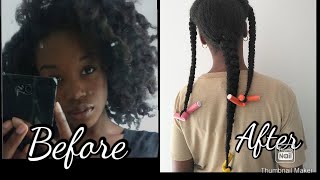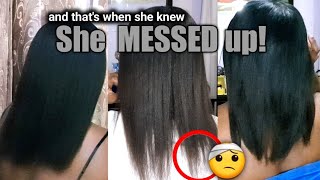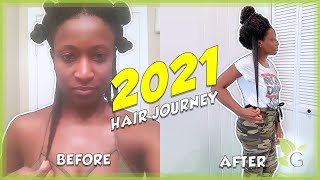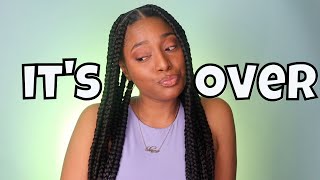Newbies (And Vets) Do You REALLY Know Your Hair?
 My hair is naturally very kinky* (4b). This isn’t a guess or my perception of my natural texture either, I am a true 4b. I know there are lots of relaxed ladies who believe themselves to have “nappy” or “kinky” hair at the start of their hair journey. Then later they embark on their natural/transitioning hair journey or even sometimes just complete a long term stretch and are shocked to discover their hair pattern is much looser then they always thought. A great example of this is popular YouTuber NinaPruitt.
My hair is naturally very kinky* (4b). This isn’t a guess or my perception of my natural texture either, I am a true 4b. I know there are lots of relaxed ladies who believe themselves to have “nappy” or “kinky” hair at the start of their hair journey. Then later they embark on their natural/transitioning hair journey or even sometimes just complete a long term stretch and are shocked to discover their hair pattern is much looser then they always thought. A great example of this is popular YouTuber NinaPruitt.
I remember during her long transition she would always describe her natural texture as kinky*, coarse and 4a/b. I would always look quizzically at my laptop screen because I could tell even with only a few inches of new growth that those statements were far from accurate. In her big-chop video, Nina spoke about being surprised at her soft texture and obvious curls. Her texture hadn’t changed, she simply was unfamiliar with it.
For most, beginning a healthy hair journey is a time filled with excitement, zeal, and enthusiasm. We pour through pages of information on our favorite online hair resources, watch countless videos and try to formulate our own hair regimens. Often we make assertions about our hair type and texture that are not true. We may think of our hair as being chronically dry so we find out about porosity and proclaim “That’s it! That’s my problem! My hair must be over porous!” and rush out to purchase apple cider vinegar*, Roux porosity control* AND a clear rinse to correct it – after all can’t be too careful, right?
After you’ve become familiar with your hair and numerous regimen tweaks and changes later, you may discover your hair doesn’t have a porosity problem at all – you were just using products that don’t deliver moisture to your hair such as oil sheens, hair polishers and grease before the start of your journey causing your perceived “chronic dryness.”
Can any of you relate? No? Let me give you a third example: you just discovered Black Hair Information and read about the importance of not using direct heat and see plenty of tutorials on heat-free styles.
You spend the first six months of your HHJ braiding and twisting your hair nightly and uncoiling in the morning to have resulting waves and curls. You may have even mastered the look and can now do it in your sleep! Excitedly you take your six month progress pictures and are sorely disappointed with the lack of length gained. Later in your journey, you decide to use heat *gasp* in moderation and with an effective heat protectant*. This time around, your six month comparison photos show all kinds of improvement – length, thickness, shine! You’ve learned that YOUR hair responds better to using heat regularly (some even heat train).
The moral of this story is this: as a newbie to your hair journey and even as a veteran, try to avoid making hard and fast assumptions about your hair based (soley) on your knowledge and experience gained prior to the start of your hair journey. Even if your thoughts on your hair are 100% correct at the start of your journey, often your hair changes once you begin to care for it properly. As you go deeper into your journey and your moisture/protein levels become regulated amongst other improvements, your hair will more than likely differ in several ways: texture, requirements, even preferred products and ingredients.
Part of the importance of a HHJ is learning your hair and this is also a big key to having a successful hair journey. Be flexible in your views regarding your hair, allow yourself time to truly get to know your hair, and remember to adapt your regimen and techniques as your hair grows long and healthy.




